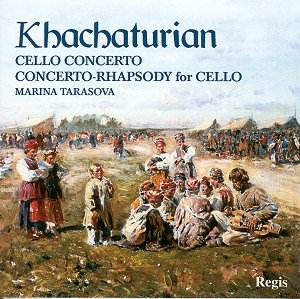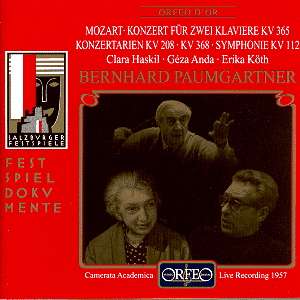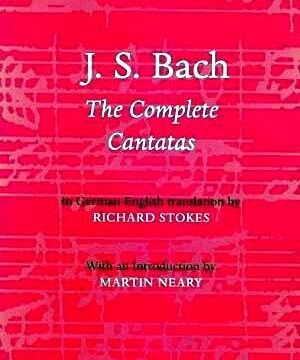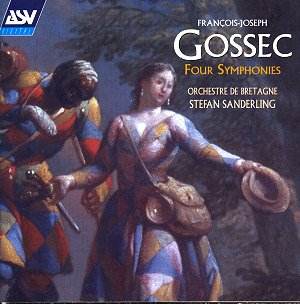 Composer: Aram Khachaturian
Composer: Aram Khachaturian
Works: Cello Concerto, Cello-Rhapsody for Cello and Orchestra
Performers: Marina Tarasova, cello; Symphony Orchestra of Russia; Veronika Dudarova, conductor
Recording: Moscow Radio Studio 5, 1994
Label: Regis RRC 1094
Aram Khachaturian’s Cello Concerto, composed in 1946, occupies a significant position in the post-war Soviet musical canon, marked by its vigorous engagement with nationalistic elements and Western influences alike. The work stands as a testament to Khachaturian’s unique voice, blending Armenian folk motifs with the broader European concerto tradition. The concerto’s premiere featured two luminaries of Soviet music—cellist Sviatoslav Knushevitsky and conductor Alexander Gauk—who introduced audiences to its vivid orchestral colors and virtuosic demands. However, the complexities of this music often elude coherence, a challenge that this recording by Marina Tarasova and the Symphony Orchestra of Russia grapples with throughout its duration.
Marina Tarasova exhibits a commendable grasp of the solo line, bringing a palpable intensity to her performance. Her technical prowess allows her to navigate the intricate passages with an admirable mix of agility and emotive depth, particularly in the expansive first movement. Tarasova’s interpretative choices manifest in her ability to articulate the contrasting character of the music, from the fervent, almost militaristic motifs to the more introspective, lyrical moments. Yet, the writing itself can feel disjointed, as if Khachaturian’s exuberant ideas are straining against the constraints of formal unity. This is evident in the punctuated orchestral interjections that disrupt the otherwise fluid dialogue between the cello and orchestra, such as the abrupt shifts around the 16:02 mark.
Dudarova’s direction, while competent, sometimes lacks the necessary cohesion to weave the disparate elements of Khachaturian’s score into a satisfying whole. The orchestral palette, rich with color, is showcased well, particularly in the woodwind sections that provide a sinuous counterpoint to the cello. However, moments of orchestral bombast can obscure the soloist’s voice, leading to an imbalance in the overall texture. The slow movement, often described as “oriental” and “melismatic,” strives for a sense of desperation that, in this rendition, feels muted and unfulfilled. Here, the lyrical qualities hinted at in the notes remain elusive, as the thematic material lacks the development that would elevate it beyond mere surface beauty.
The Cello-Rhapsody, written for the eminent Mstislav Rostropovich, presents an intriguing contrast to the concerto. It features a more fragmented structure but also reveals a troubling reliance on orchestral color rather than thematic substance. The initial cadenza, striking in its insistent nature, gives way to an orchestral predominance that further complicates the cello’s role. While the Allegro Animato contains lively Armenian dance rhythms, the overall impression is one of superficiality, where the orchestration often feels like a façade masking a lack of compelling musical ideas. This recording does not offer the rhetorical weight found in Rostropovich’s own interpretations, which are imbued with a sense of narrative coherence that is notably absent here.
Sound quality and engineering are adequate, presenting a clear albeit somewhat sterile auditory experience. The recording captures the individual voices of the orchestra and the cello distinctly, yet it lacks the warmth and resonance that might enhance the emotional impact of these works. Compared to other notable interpretations, such as Rostropovich’s celebrated recordings, this version falls short in delivering the dramatic arc and thematic clarity that characterize Khachaturian’s best work.
The performance by Tarasova and Dudarova offers an earnest yet ultimately flawed attempt to navigate the complexities of Khachaturian’s music. While Tarasova’s commitment and technical skill shine through, they are not enough to overcome the inherent structural weaknesses of the compositions themselves. The recording serves as a document of the music but lacks the interpretative depth and clarity that would allow it to resonate powerfully with its audience. The advocacy of the performers is commendable, yet the results reflect the challenges of bringing Khachaturian’s ambitions to life in a cohesive and compelling manner.



